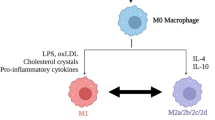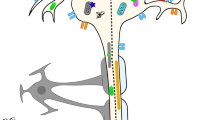Abstract
Leucine-rich repeat-containing G-protein coupled receptor 5 (LGR5), a well-characterized marker of stem cell and cancer stem cells (CSCs), is best known as a transmembrance receptor for increases canonical Wnt signaling amplitude. In addition, in some types of human cancers, LGR5 has been found to be overexpressed. However, the distribution and function of LGR5 in spinal cord injury (SCI) are still unknown. In this study, we examined LGR5 expression and cellular localization in rats following acute SCI. Western blot analysis and immunohistochemistry exhibited an important upregulation of LGR5 in injury spinal cord. Double immunofluorescence staining showed that LGR5 was co-expressed with glial fibrillary acidic protein (GFAP). Moreover, we detected that PCNA had colocalization with LGR5 and GFAP after SCI. In the vitro model, we could find the enhanced expression of LGR5 in the primary astrocyte which was induced by the lipopolysaccharide (LPS). In particular, we found the significantly decreased ability for proliferation when this LGR5-specific siRNA transfected primary astrocytes. In a word, this is the first description of LGR5 expression in spinal cord injury. These data indicated that LGR5 might be of great significance in CNS pathophysiology after SCI.






Similar content being viewed by others
Abbreviations
- LGR5:
-
Leucine-rich repeat-containing G-protein coupled receptor 5
- SCI:
-
Spinal cord injury
- CNS:
-
Central nervous system
- SD:
-
Sprague–Dawley
- NeuN:
-
Neuronal nuclear antigen
- GFAP:
-
Glial fibrillary acidic protein
- IBa1:
-
Ionized calcium-binding adapter molecule 1
- siRNA:
-
Short interfering RNA
References
Cheng C, Gao S, Zhao J, Niu S, Chen M, Li X, Qin J, Shi S, Guo Z, Shen A (2008) Spatiotemporal patterns of postsynaptic density (PSD)-95 expression after rat spinal cord injury. Neuropathol Appl Neurobiol 34(3):340–356. doi:10.1111/j.1365-2990.2007.00917.x
Zeinalizadeh M, Hussain Khan Z (2015) Spinal cord injured patients: bait for research in the current millennium. Acta Med Iran 53(11):667–668
Harnish CR, Daniels JA, Caruso D (2016) Training response to high-intensity interval training in a 42-year-old man with chronic spinal cord injury. J Spinal Cord Med. doi:10.1080/10790268.2015.1136783
Davies SJ, Field PM, Raisman G (1996) Regeneration of cut adult axons fails even in the presence of continuous aligned glial pathways. Exp Neurol 142(2):203–216. doi:10.1006/exnr.1996.0192
Alonso-Calvino E, Martinez-Camero I, Fernandez-Lopez E, Humanes-Valera D, Foffani G, Aguilar J (2016) Increased responses in the somatosensory thalamus immediately after spinal cord injury. Neurobiol Dis 87:39–49. doi:10.1016/j.nbd.2015.12.003
He B, Nan G (2015) Pulmonary edema and hemorrhage after acute spinal cord injury in rats. Spine J. doi:10.1016/j.spinee.2015.11.065
Bramanti V, Tomassoni D, Grasso S, Bronzi D, Napoli M, Campisi A, Li Volti G, Ientile R, Amenta F, Avola R (2012) Cholinergic precursors modulate the expression of heme oxigenase-1, p21 during astroglial cell proliferation and differentiation in culture. Neurochem Res 37(12):2795–2804. doi:10.1007/s11064-012-0873-3
Labombarda F, Jure I, Gonzalez S, Lima A, Roig P, Guennoun R, Schumacher M, De Nicola AF (2015) A functional progesterone receptor is required for immunomodulation, reduction of reactive gliosis and survival of oligodendrocyte precursors in the injured spinal cord. J Steroid Biochem Mol Biol 154:274–284. doi:10.1016/j.jsbmb.2015.09.011
Duan C, Liu Y, Lu L, Cai R, Xue H, Mao X, Chen C, Qian R, Zhang D, Shen A (2015) CDK14 contributes to reactive gliosis via interaction with cyclin Y in rat model of spinal cord injury. J Mol Neurosci 57(4):571–579. doi:10.1007/s12031-015-0639-x
Bramanti V, Grasso S, Tibullo D, Giallongo C, Raciti G, Viola M, Avola R (2015) Modulation of extracellular signal-related kinase, cyclin D1, glial fibrillary acidic protein, and vimentin expression in estradiol-pretreated astrocyte cultures treated with competence and progression growth factors. J Neurosci Res 93(9):1378–1387. doi:10.1002/jnr.23606
Bramanti V, Grasso S, Tibullo D, Giallongo C, Pappa R, Brundo MV, Tomassoni D, Viola M, Amenta F, Avola R (2016) Neuroactive molecules and growth factors modulate cytoskeletal protein expression during astroglial cell proliferation and differentiation in culture. J Neurosci Res 94(1):90–98. doi:10.1002/jnr.23678
Grasso S, Bramanti V, Tomassoni D, Bronzi D, Malfa G, Traini E, Napoli M, Renis M, Amenta F, Avola R (2014) Effect of lipoic acid and alpha-glyceryl-phosphoryl-choline on astroglial cell proliferation and differentiation in primary culture. J Neurosci Res 92(1):86–94. doi:10.1002/jnr.23289
Bramanti V, Tomassoni D, Avitabile M, Amenta F, Avola R (2010) Biomarkers of glial cell proliferation and differentiation in culture. Front Biosci 2:558–570
Wang T, Yuan W, Liu Y, Zhang Y, Wang Z, Zhou X, Ning G, Zhang L, Yao L, Feng S, Kong X (2015) The role of the JAK-STAT pathway in neural stem cells, neural progenitor cells and reactive astrocytes after spinal cord injury. Biomed Rep 3(2):141–146. doi:10.3892/br.2014.401
Zhang S, Huan W, Wei H, Shi J, Fan J, Zhao J, Shen A, Teng H (2013) FOXO3a/p27kip1 expression and essential role after acute spinal cord injury in adult rat. J Cell Biochem 114(2):354–365. doi:10.1002/jcb.24371
Shen A, Liu Y, Zhao J, Qin J, Shi S, Chen M, Gao S, Xiao F, Lu Q, Cheng C (2008) Temporal-spatial expressions of p27kip1 and its phosphorylation on Serine-10 after acute spinal cord injury in adult rat: Implications for post-traumatic glial proliferation. Neurochem Int 52(6):1266–1275. doi:10.1016/j.neuint.2008.01.011
Chen Q, Cao HZ, Zheng PS (2014) LGR5 promotes the proliferation and tumor formation of cervical cancer cells through the Wnt/beta-catenin signaling pathway. Oncotarget 5(19):9092–9105. doi:10.18632/oncotarget.2377
Forgham H, Johnson D, Carter N, Veuger S, Carr-Wilkinson J (2015) Stem cell markers in neuroblastoma–an emerging role for LGR5. Front Cell Dev Biol 3:77. doi:10.3389/fcell.2015.00077
Junttila MR, Mao W, Wang X, Wang BE, Pham T, Flygare J, Yu SF, Yee S, Goldenberg D, Fields C, Eastham-Anderson J, Singh M, Vij R, Hongo JA, Firestein R, Schutten M, Flagella K, Polakis P, Polson AG (2015) Targeting LGR5+ cells with an antibody-drug conjugate for the treatment of colon cancer. Sci Transl Med 7(314):314ra186. doi:10.1126/scitranslmed.aac7433
Miao J, Jiang Y, Wang D, Zhou J, Fan C, Jiao F, Liu B, Zhang J, Wang Y, Zhang Q (2015) Trichosanthin suppresses the proliferation of glioma cells by inhibiting LGR5 expression and the Wnt/beta-catenin signaling pathway. Oncol Rep 34(6):2845–2852. doi:10.3892/or.2015.4290
Hirsch D, Hu Y, Ried T, Moll R, Gaiser T (2014) Transcriptome profiling of LGR5 positive colorectal cancer cells. Genom Data 2:212–215. doi:10.1016/j.gdata.2014.06.005
Su S, Hong F, Liang Y, Zhou J, Liang Y, Chen K, Wang X, Wang Z, Wang Z, Chang C, Han W, Gong W, Qin H, Jiang B, Xiong H, Peng L (2015) Lgr5 Methylation in cancer stem cell differentiation and prognosis-prediction in colorectal cancer. PloS One 10(11):e0143513. doi:10.1371/journal.pone.0143513
Wang W, Redecker C, Yu ZY, Xie MJ, Tian DS, Zhang L, Bu BT, Witte OW (2008) Rat focal cerebral ischemia induced astrocyte proliferation and delayed neuronal death are attenuated by cyclin-dependent kinase inhibition. J Clin Neurosci 15(3):278–285. doi:10.1016/j.jocn.2007.02.004
Cregg JM, DePaul MA, Filous AR, Lang BT, Tran A, Silver J (2014) Functional regeneration beyond the glial scar. Exp Neurol 253:197–207. doi:10.1016/j.expneurol.2013.12.024
Byrnes KR, Stoica BA, Fricke S, Di Giovanni S, Faden AI (2007) Cell cycle activation contributes to post-mitotic cell death and secondary damage after spinal cord injury. Brain: a journal of neurology 130 (Pt 11):2977–2992. doi:10.1093/brain/awm179
Winnefeld M, Grewenig A, Schnolzer M, Spring H, Knoch TA, Gan EC, Rommelaere J, Cziepluch C (2006) Human SGT interacts with Bag-6/Bat-3/Scythe and cells with reduced levels of either protein display persistence of few misaligned chromosomes and mitotic arrest. Exp Cell Res 312(13):2500–2514. doi:10.1016/j.yexcr.2006.04.020
Do-Thi A, Perrin FE, Desclaux M, Saillour P, Amar L, Privat A, Mallet J (2015) Combination of grafted Schwann cells and lentiviral-mediated prevention of glial scar formation improve recovery of spinal cord injured rats. J Chem Neuroanat. doi:10.1016/j.jchemneu.2015.12.014
Levine J (2015) The reactions and role of NG2 glia in spinal cord injury. Brain Res. doi:10.1016/j.brainres.2015.07.026
Furihata T, Ito R, Kamiichi A, Saito K, Chiba K (2016) Establishment and characterization of a new conditionally immortalized human astrocyte cell line. J Neurochem 136(1):92–105. doi:10.1111/jnc.13358
Li D, Zhang M, Zhang Q, Wang Y, Song X, Zhang Q (2015) Functional recovery after acute intravenous administration of human umbilical cord mesenchymal stem cells in rats with cerebral ischemia-reperfusion injury. Intractable Rare Dis Res 4 (2):98–104. doi:10.5582/irdr.2015.01010
Becker EB, Bonni A (2004) Cell cycle regulation of neuronal apoptosis in development and disease. Prog Neurobiol 72(1):1–25. doi:10.1016/j.pneurobio.2003.12.005
Liu DX, Greene LA (2001) Neuronal apoptosis at the G1/S cell cycle checkpoint. Cell Tissue Res 305(2):217–228
Stankiewicz TR, Linseman DA (2014) Rho family GTPases: key players in neuronal development, neuronal survival, and neurodegeneration. Front Cell Neurosci 8:314. doi:10.3389/fncel.2014.00314
Sato T, Vries RG, Snippert HJ, van de Wetering M, Barker N, Stange DE, van Es JH, Abo A, Kujala P, Peters PJ, Clevers H (2009) Single Lgr5 stem cells build crypt-villus structures in vitro without a mesenchymal niche. Nature 459(7244):262–265. doi:10.1038/nature07935
Haegebarth A, Clevers H (2009) Wnt signaling, lgr5, and stem cells in the intestine and skin. Am J Pathol 174(3):715–721. doi:10.2353/ajpath.2009.080758
Becker L, Huang Q, Mashimo H (2008) Immunostaining of Lgr5, an intestinal stem cell marker, in normal and premalignant human gastrointestinal tissue. Sci World J 8:1168–1176. doi:10.1100/tsw.2008.148
Tian DS, Yu ZY, Xie MJ, Bu BT, Witte OW, Wang W (2006) Suppression of astroglial scar formation and enhanced axonal regeneration associated with functional recovery in a spinal cord injury rat model by the cell cycle inhibitor olomoucine. J Neurosci Res 84(5):1053–1063. doi:10.1002/jnr.20999
Author information
Authors and Affiliations
Corresponding author
Additional information
Xiaoqing Chen and Jie Hao contributed equally to this work.
Rights and permissions
About this article
Cite this article
Chen, X., Hao, J., Fu, T. et al. Temporal and Spatial Expression of LGR5 After Acute Spinal Cord Injury in Adult Rats. Neurochem Res 41, 2645–2654 (2016). https://doi.org/10.1007/s11064-016-1977-y
Received:
Revised:
Accepted:
Published:
Issue Date:
DOI: https://doi.org/10.1007/s11064-016-1977-y




